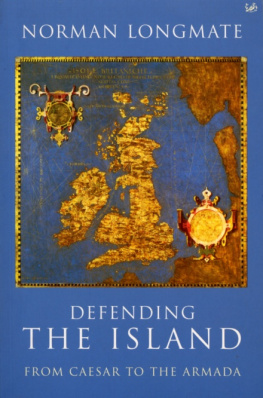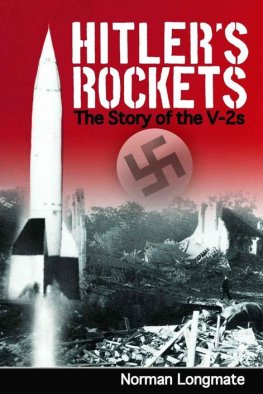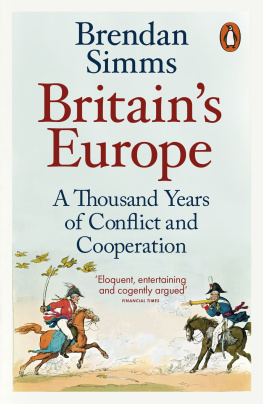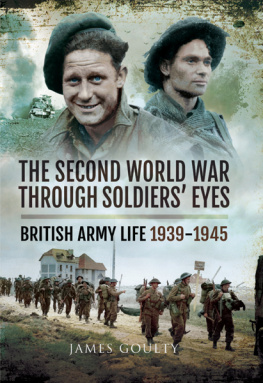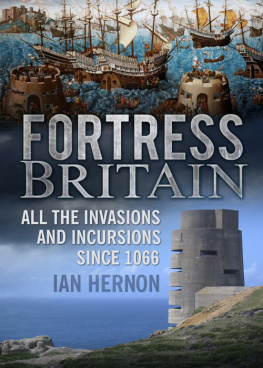ISLAND FORTRESS
The Defence of Great Britain 16031945
NORMAN LONGMATE
This ebook is copyright material and must not be copied, reproduced, transferred, distributed, leased, licensed or publicly performed or used in any way except as specifically permitted in writing by the publishers, as allowed under the terms and conditions under which it was purchased or as strictly permitted by applicable copyright law. Any unauthorised distribution or use of this text may be a direct infringement of the authors and publishers rights and those responsible may be liable in law accordingly.
Version 1.0
Epub ISBN 9781446475775
Published by Pimlico 2001
2 4 6 8 10 9 7 5 3 1
Copyright Norman Longmate 1991
Norman Longmate has asserted his right under the Copyright, Designs and Patents Act, 1988 to be identified as the author of this work
This book is sold subject to the condition that it shall not, by way of trade or otherwise, be lent, resold, hired out, or otherwise circulated without the publishers prior consent in any form of binding or cover other than that in which it is published and without a similar condition including this condition being imposed on the subsequent purchaser
First published in Great Britain by Hutchinson, 1991 Pimlico edition 2001
Pimlico
Random House, 20 Vauxhall Bridge Road,
London SW1V 2SA
Random House Australia (Pry) Limited
20 Alfred Street, Milsons Point, Sydney
New South Wales 2061, Australia
Random House New Zealand Limited
18 Poland Road, Glenfield,
Auckland 10, New Zealand
Random House South Africa (Pty) Limited
Endulini, 5A Jubilee Road, Parktown 2193, South Africa
The Random House Group Limited Reg. No. 954009 www.randomhouse.co.uk
A CIP catalogue record fo this book is available from the British Library
ISBN 0-7126-6813-6
CONTENTS
About the Author
Norman Longmate was born in Newbury, Berkshire, and educated by scholarship at Christs Hospital, where he was deeply influenced by an inspiring history teacher. After war service in the army he read modern history at Worcester College, Oxford. He subsequently worked as a journalist in Fleet Street, as a producer of history programmes for the BBC, and for the BBC Secretariat. In 1981 he was elected a Fellow of the Royal Historical Society and in 1983 he left the BBC to become a full-time writer.
Norman Longmate is the author of more than twenty books, mainly on the Second World War and on Victorian social history, and of many radio and television scripts on historical subjects. He has frequently been employed as an historical adviser by film and television companies.
FOREWORD
With this volume I complete the history of the invasion of the British Isles, and of invasion attempts and alarms, between 55 BC and 1945. The whole project has taken most of the eight years which have elapsed since I became a full-time writer in 1983. Approximately half that time has been taken up by research, including visits to most of the areas and often the specific forts mentioned.
I hope that in these circumstances I may be forgiven some personal recollections. The great Edward Gibbon, in a famous passage in his Autobiography, refers to being condemned during two years and a half to a wandering life of military servitude, while he was an officer in the militia during the invasion alarm of 17602, which I describe in Chapter 14. After an excellent account of his time under arms, Gibbon comments: The captain of the Hampshire grenadiers (the reader may smile) has not been useless to the historian of the Roman Empire. My own military servitude was twice as long, involving one year in the Home Guard and nearly four in the army, but I must similarly acknowledge that my experiences have also proved unexpectedly helpful in writing this book. It is not essential, in order to describe the deficiencies of a Sten gun, to have fired one, but it is certainly no disadvantage, and few military historians will, I think, have had the advantage I enjoyed during my military service of having attended a training course in army organisation.
My major problem, apart from the sheer volume of reading and vast range of subjects to be covered, has been the contradictions contained in the sources, which inevitably become worse the more authorities one consults, even over such basic matters as the number of men serving at a particular time, or the names of the ships sunk or damaged in a particular action. Where I have not been able to reach a definite conclusion on some disputed fact I have indicated this in a footnote. A constant annoyance has been the reluctance of so many writers to include an adequate number of dates, especially the year an event occurred. This fault, too, I have tried to avoid.
For much of the period covered by this volume variations in the spelling of surnames still occurred, and in these cases I have used what seems the preferred version with, the first time the name is mentioned, the alternatives in brackets. I have followed a similar practice over place-names, where standardisation came even later, and have also tried to identify their precise location, so often left vague in the original. As in Defending the Island, From Caesar to the Armada, to which this book forms the sequel, I have quoted from poems and other sources only when the narrative has reached the point when they were written. I have used throughout the pre1974 names of the counties, but have translated measurements and prices into their metric equivalents except in the case of tons, where there is little difference from the more recent tonnes. In the earlier extracts I have occasionally retained the original spelling, but in general have standardised punctuation and the use of capitals (scattered in profusion, but inconsistently, through so many documents) to conform to modern practice.
A large number of people have assisted me in various ways, indeed of nearly sixty whom I approached only one failed to reply. The list that follows does not include most of those already mentioned in the Foreword to Volume I, but is otherwise comprehensive and I offer apologies to anyone inadvertently omitted.
Mr CM. Tod of Whiteheads, estate agents, of Chichester, kindly gave me particulars of sale about No Mans Land Fort in the Solent, near Portsmouth; Messrs Vinder, Carew and Co., of Plymouth, were similarly helpful over Fort Picklecombe, as was Mr Richard Ashworth of Parker May and Rowden of London W.I on the disposal of the former Royal Ordnance Depot at Weedon, and, on the same subject, Mr P.R. Waights of Daventry District Council. Mr Reg Curtis of Rochester provided me with much information on the Chatham defences of 191518 and put me in touch with Mr George Wilson, now of Ambleside, who provided me with a bricklayers eye view of the pillboxes on which he worked in Kent in the Second World War. I am much indebted to Mr Steve Goodhand, then an Assistant Keeper of Local History for the City of Portsmouth, who devoted two days to taking me round this important area, during which Lieut.-Commander H. Donnithorne, RN, kindly escorted me round the sites at Gosport now within the grounds of HMS Dolphin.
Many Museum curators and librarians and their staff gave generously of their time to help me and my acknowledgement is, wherever possible, to the individual concerned, though he or she may since then have moved elsewhere. On Dorset I am grateful to Mr A.M. Hunt of the Dorset Institute of Higher Education, Weymouth, and Mr Eric Reeson of the


